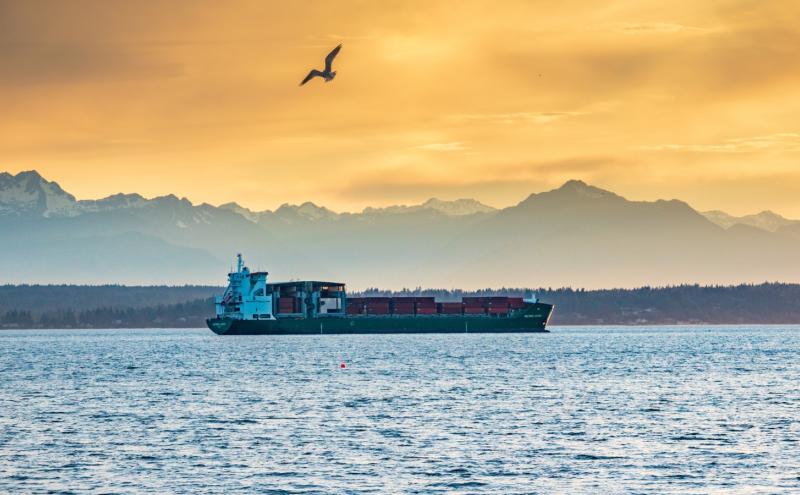
Today is World Wildlife Day and we’re celebrating the wonderful animals that call this beautiful region home. Here are our local favorites that we were lucky enough to catch on camera.
Above, a western gull catches the breeze above Elliott Bay above the anchored Westwood Olympic.
1. Nesting osprey grow their family at the Duwamish River People’s Park.
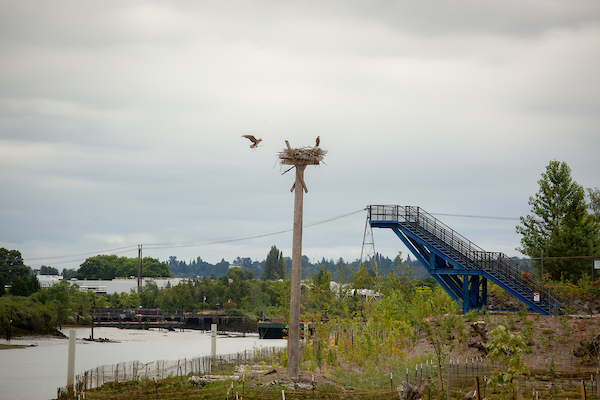
The Duwamish River People’s Park is 14 acres of valuable habitat for local wildlife and an amazing public park for nearby communities. Local children nicknamed this pair of ospreys “Birdie” and “Chinook.” The couple had their first pair of fledglings in 2022. This is one piece of the Port’s goal to restore 40 acres of habitat by 2050, supporting a range of fish and wildlife species while contributing to environmental and conservation objectives.
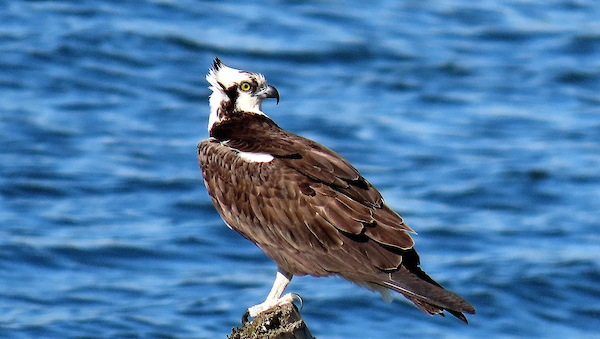
2. Raptors find home sweet home away from the Airport.
Baby raptors are seriously cute. And they need to stay that way. Airplanes and birds are not an ideal or safe combination, so it’s best that they spread their wings elsewhere. Did you know SEA Airport was the first in the country to have a wildlife biologist on staff? The wildlife management team rehomes these birds and other animals for the benefit of people and birds.
3. Whoooo’s there?
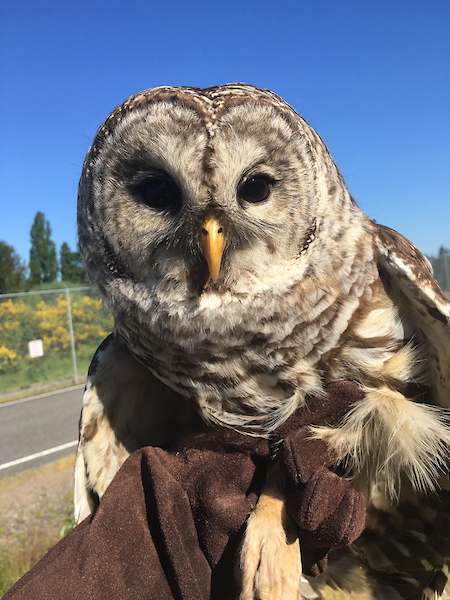
This Barred Owl found near the airport was taken to a new home in the Skagit Valley.
Barn owls
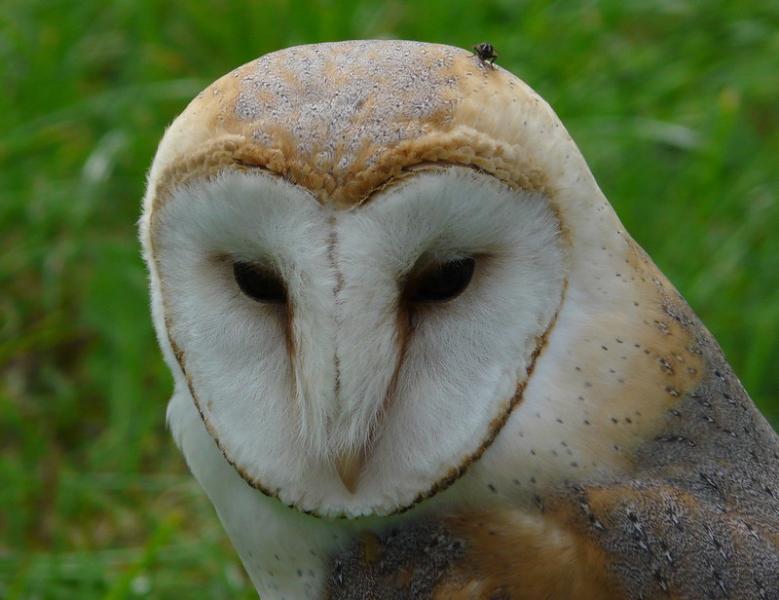
The Port is welcoming barn owls to new homes by installing 10 nesting boxes on Port maritime properties. Barn owls, scientific name Tyto Alba, help control rodent populations naturally without using toxic chemicals.
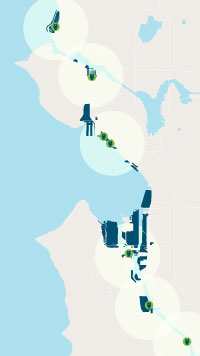
A few fun facts about barn owls:
Fact 1: The barn owls' ability to locate prey by sound alone is the best of any animal that has ever been tested. Owls can catch mice in complete darkness in the lab, or hidden by vegetation or snow out in the real world (Source: AllaboutBirds.com from Cornell University)
Fact 2: Barn owls don't hoot like other owls; they have a raspy call (Source: AllaboutBirds.com, Cornell University)
Fact 3: Barn owl faces are shaped like satellite dishes to capture and magnify sounds and boost their amazing hearing (Source: AllaboutBirds.com, Cornell University)
4. Restoring Miller Creek protects habitat for cutthroat trout.
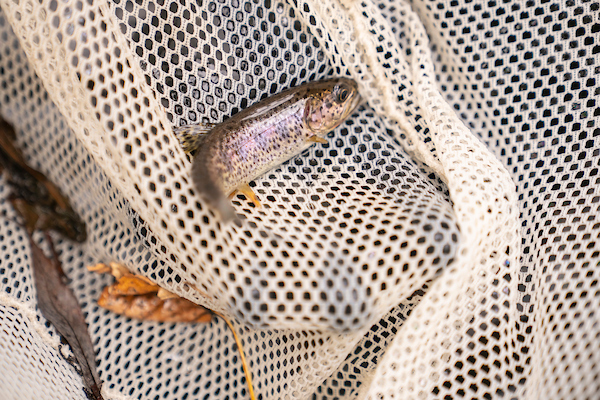
Key to fish and aquatic life survival is the ability to move. That’s why we’ve removed fish passage barriers along Miller Creek for salmonid (like coho salmon and sea-run cutthroat) and other aquatic life. Last year, we replaced a failed culvert along a safety roadway at the Airport. Now, it’s a fully functioning and passable structure for fish and vehicles. This year, in coordination with Burien and the City of SeaTac, the Port is working to replace more culverts along Miller Creek and restore an additional 450 feet of natural stream channel and riparian forest.
5. Blue Heron finds lunch at a Port park.

This blue heron is fishing near the shore of t̓uʔəlaltxʷ Village Park and Shoreline Habitat (formerly T-105 Park). Toolalt, “t-oo-ah-lal-too-wx,” means Herring’s House.
It’s said that blue herons represent determination and self-reliance. We are for one, very proud, that these stoic birds have survived the PNW. As we do our part to restore and protect the health of environment and the local community, it’s wonderful to see animals (and people!) find use in our parks.
6. We must protect all wildlife, not just the ones native to Washington.
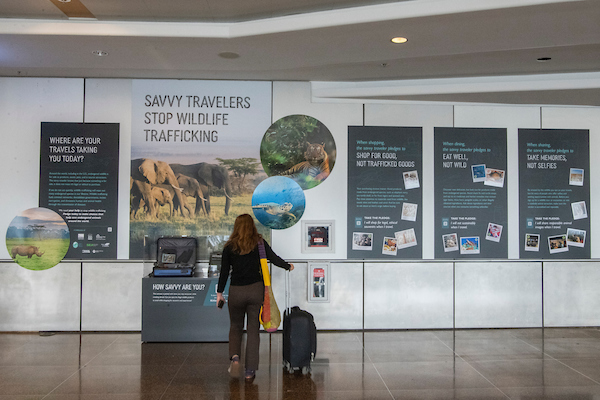
There’s no cute animal photo here, but the educational exhibit at Seattle-Tacoma International Airport (SEA) should grab your attention. SEA Airport and its partners invite all travelers to be help protect endangered animals from around the world. The display in the international terminal shares examples of illegally trafficked materials and how species are in decline because of illegal wildlife trafficking. Most importantly, it outlines how you can help:
- Shop for goods that have not been trafficked
- Eat well, not wild
- Take memories, not selfies with animals
There’s no better time than right now to make choices that save and protect wildlife around the world.





